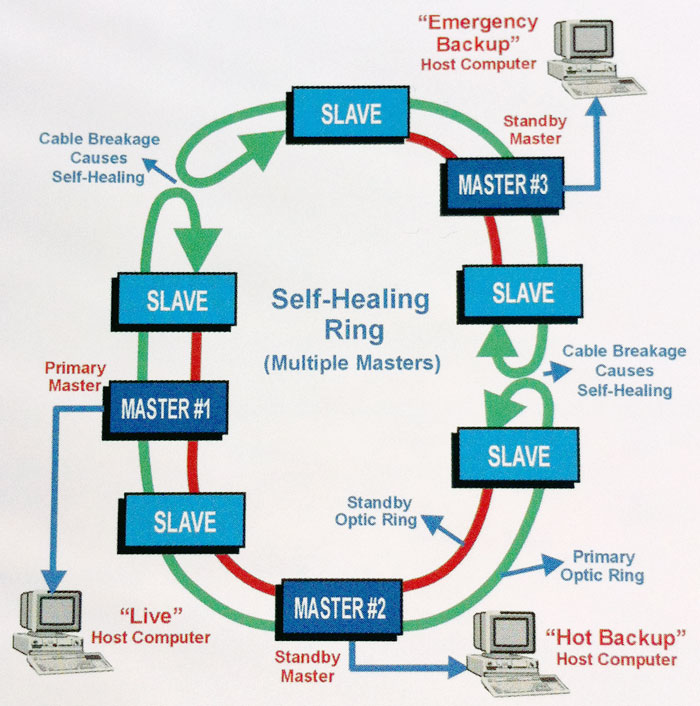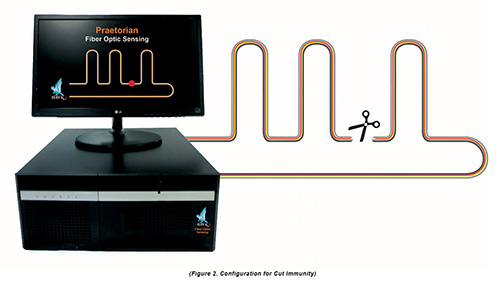Why Fiber Optic Protection Systems Are the Future of Defense
The transition to fiber optic protection systems notes a considerable advancement in the world of protection, driven by their remarkable data transmission capacities and durability to exterior disturbances. As the landscape of safety advances together with arising innovations such as AI and IoT, the potential for fiber optics to enhance and redefine protection frameworks becomes significantly noticeable.
Advantages of Fiber Optic Solutions
Among the primary benefits of fiber optic systems is their superior data transfer capability, which helps with the transmission of huge volumes of information over cross countries without considerable loss. This characteristic is particularly helpful for protection applications that need the constant tracking and transfer of high-def video clip feeds, sensor data, and various other essential details. Optical fiber can suit the expanding demands of modern-day security systems, making certain that information remains intact and trusted.
Additionally, fiber optic cables are less at risk to electromagnetic disturbance, which can be a substantial problem in settings with numerous electronic tools. This resistance enhances the integrity of the data being transferred, thereby reducing the risk of data violations or system failures. Fiber optic systems are naturally much more protected than traditional copper cable televisions, as touching into a fiber optic line without discovery is extremely hard.
The longevity of fiber optic wires additionally adds to their appeal. They are resistant to environmental elements such as dampness and temperature changes, minimizing maintenance costs and enhancing system longevity. On the whole, these advantages placement fiber optic systems as a robust and effective choice for modern security facilities, making sure reputable and safe and secure data transmission.
Enhanced Information Transmission Speed

The capacity to send vast quantities of data swiftly assists in the smooth integration of high-definition video clip feeds and advanced analytics. Safety and security systems can now process and evaluate info in real-time, enhancing reaction times and situational understanding. Additionally, fiber optic connections support longer transmission distances without deterioration of signal top quality, making them optimal for extensive safety networks.
The enhanced speed of fiber optic systems not just improves the effectiveness of safety operations but likewise decreases latency. This is particularly vital in crucial circumstances where prompt decision-making can protect against protection breaches or alleviate possible threats. As organizations remain to prioritize safety and performance, the demand for quick and reputable data transmission will undoubtedly strengthen fiber security fiber optic systems as a keystone of contemporary security infrastructure.
Resistance to Interference
Fiber optic safety systems consistently show remarkable resistance to electro-magnetic disturbance, an important benefit in environments prone to digital noise. Unlike conventional copper cables, which can be adversely affected by magnetic fields, superhigh frequency disturbance, and various other types of electric disruption, fiber optic wires utilize light to send information. This inherent building guarantees that the signals stay clear and unchanged, no matter surrounding electronic task.
Making use of glass or plastic fibers in fiber optic innovation creates an obstacle versus disturbance, permitting reputable data transmission even in tough circumstances such as industrial facilities, metropolitan areas with high electronic web traffic, or locations near radio towers. This particular dramatically decreases the chance of signal degradation or loss, making fiber optic systems especially ideal for safety applications where stability and accuracy of information are paramount.
Additionally, this resistance to interference enhances the total efficiency and dependability of safety systems, guaranteeing that monitoring and sharp systems work seamlessly. In a world where protection is increasingly intimidated by advanced innovations, the resilience of fiber optic systems stands apart as a crucial attribute, reinforcing their standing as a necessary part of modern protection framework.
Cost-Effectiveness Gradually
Significant price savings can be achieved with time with the application of fiber optic safety and security systems. While the preliminary financial investment may appear higher compared to conventional copper-based systems, the long-lasting financial benefits end up being obvious with lowered functional and upkeep prices (fiber security). Fiber optic wires are naturally more sturdy and much less vulnerable to ecological elements, which translates to reduce substitute and repair expenditures over their life expectancy
Additionally, fiber optic systems need less power to operate, which further lowers energy costs. Improved information transmission abilities allow for less repeaters and amplifiers, decreasing tools investment and streamlining installation processes. The scalability of these systems additionally contributes to cost-effectiveness, as organizations can expand their protection framework without sustaining considerable extra costs.
One more element to take into consideration is the raised effectiveness in monitoring and feedback capabilities that optical fiber give. Improved real-time data transmission can lead to quicker occurrence feedback times, possibly mitigating losses and liabilities related to security violations. In amount, the long-lasting benefits of fiber optic security systems not just justify the initial expenditure however additionally place them as a financially prudent choice for organizations looking for durable security solutions.

Future Technologies in Safety And Security
Progressing modern technologies are established to change safety systems, incorporating expert system (AI) and device knowing to enhance hazard detection and action abilities. These technologies will certainly allow protection systems to assess vast quantities of information in real-time, identifying patterns and anomalies that suggest potential risks. This aggressive technique will make it possible for quicker decision-making and extra reliable occurrence actions.
In addition, the consolidation of the Web of Points (IoT) is leading the way for interconnected protection devices, providing thorough surveillance and tracking. Smart sensing units can relay info regarding ecological adjustments, while automated notifies can alert security employees right away of questionable tasks.
Additionally, the development of biometric technologies will additionally boost safety mechanisms. Facial recognition, finger print scanning, and retina identification are becoming extra innovative, giving layers of verification that are tough to bypass.
Conclusion
To conclude, fiber optic security systems represent a significant innovation in security modern technology, using unmatched information transmission rate, resistance to electro-magnetic disturbance, and long-term cost-effectiveness. As the demand for innovative security options continues to grow, the integration of optical fiber with arising innovations such as AI, IoT, and biometrics will better boost safety facilities (fiber security). The mix of these developments will make certain an extra safe and receptive environment, solidifying fiber optics as a foundation of future safety and security systems